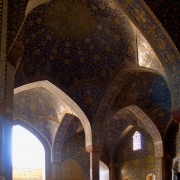The Cosmo-Eschatology of Saints and Mahdis. In Sufi Cosmology, Handbook of Sufi Studies Vol. 2, eds. Alexander Knysh and Christian Lange. Leiden: Brill, 2022:250-274
“As discussed in Chapter 1 of this volume, Sufi thought on the structure of the cosmos is deeply intertwined with ideas about death, the end of the world, and the afterlife, giving rise to what can be termed a Sufi cosmo-eschatology. Drawing on various aspects of the Qurʾān and ḥadīth, including the complex body of apocalyptic logia that emerged from the internecine conflicts of the Umayyad and early ʿAbbāsid periods (malāḥim wa-fittan, as well as some eschatological akhbār of the Shīʿī Imams), Sufi thinkers dwelt frequently on the secrets of the Unseen world(s) (al-ghayb) said to underlie the merely apparent reality of this one, urging aspirants on the path to die to this world so as to gain the other. While the “inward turn” of early Sufissm—a newfound focus on introspection and personal salvation (Karamustafa, 2, 17, 21)—helped domesticate the theological and political fervor of early Islamic apocalypticism, Sufi think- ers nonetheless retained claims to types of quasi-prophetic/visionary spiritual authority that frequently discomfited and sometimes outraged religious specialists of other stripes, as is most evident in controversies around Sufi notions of sainthood (wilāya). Sufi claims of spiritual authority sometimes spilled over into implicit or explicit“









